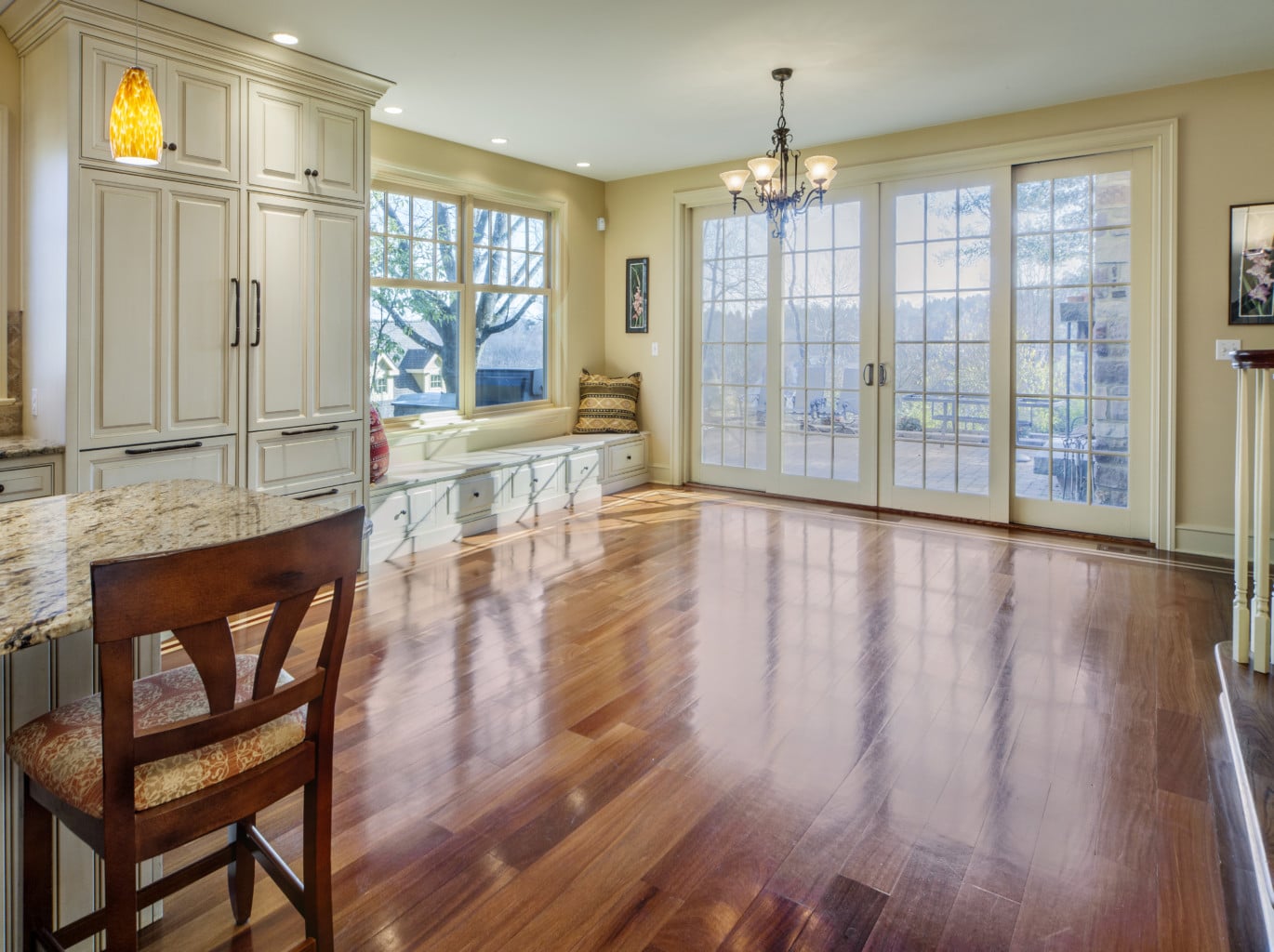
Why install a wide plank floor in the kitchen or bathroom?
If you already have wide plank hardwood floors installed in other areas of your home, installing them in the kitchen (especially if it’s connected to the living room) and/or the bathroom can promote a sense of continuity and flow throughout the space. Not to mention the fact that wide plank floors are currently on trend and can make a space look larger than it actually is.
Pointers to keep in mind when installing wide plank floors in the kitchen and bathroom
- Go with engineered wide plank floors. This is an especially important point when wide plank floors are installed. We usually recommend installing engineered rather than solid wide plank floors for anything wider than 7 inches. As the width of the planks increase, so does the susceptibility of the planks to changes in humidity and temperature. When you are installing wide plank floors in a kitchen or bathroom, ensuring stability in the planks is even more crucial, which is why we would recommend engineered wide plank floors in every situation like this.
- Choose the right finish. If you’re installing a solid wide plank floor, your finish choice will also influence the overall water resistance of your choice. If you’re installing a prefinished engineered wide plank floor, the finish will already be applied, and the finish will most likely be UV-cured and very durable. But if you get to choose the finish, you most likely will want to go with a moisture-cured product. Moisture-cured finishes are clear to amber in color are extremely durable and more moisture-resistant than other surface finishes.
- Be mindful of moisture. Your first step is to consider the amount of usage that the room in question will get. You might not want to install a hardwood floor in a bathroom that is used a lot––perhaps consider installing it in a guest bathroom or another bathroom that doesn’t get as much use, or that children don’t have access to. For a kitchen, it’s less of an issue because there’s generally less of a threat of spillage, water exposure, or flooding than in a bathroom. Promptly mop up and thoroughly dry any spills that happen
- Take preventative measures. Place rugs in “high-risk” areas, i.e. in front of the bathtub, vanity/sink, and the shower. Something as simple as a clogged toilet or kitchen sink, or condensation on the toilet feed pipes could potentially turn into a much bigger issue. Take preventative measures, and fix all problems as soon as they arise. Prevention is the best defense against moisture-related problems in hardwood floors.
As you can see, installing a wide plank hardwood floor in a kitchen or bathroom is more than possible. If you make the right choices and choose the right contractor for the job, you’ll end up with a great, calming floor for your space.